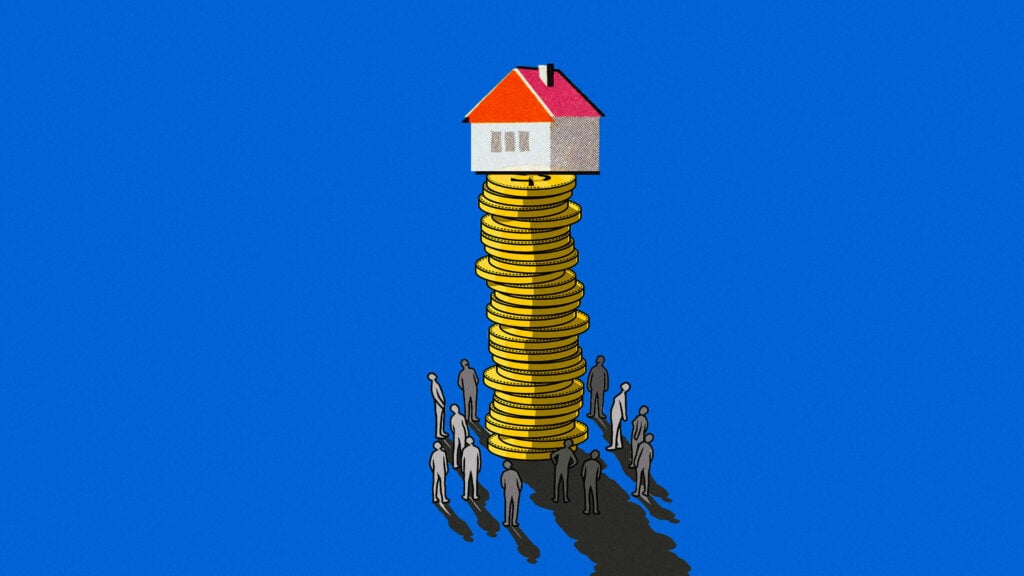For years, high home prices and mortgage rates have driven consumers from the housing market. That intimidation factor might be fading, Intel’s latest survey of 3,000 working adults found.
For years now, higher home prices and mortgage rates have driven consumers from the housing market. That intimidation factor might be fading.
Newly released findings from the Inman-Dig Insights consumer survey in July suggest fewer working U.S. adults are feeling satisfied with their current home than at the same point last year, and they’re also less likely to point to high rates and prices as reasons to put off a potential home search.
These findings help explain why housing transaction activity is up slightly year-over-year in many parts of the country.
And they point to a reason for cautious optimism in the months ahead as consumer attitudes about whether to buy become increasingly untethered from factors outside their control — like rates and prices.
In this week’s report, Intel explores the latest consumer survey findings, including what specific factors are nudging a growing share of real estate clients to overlook substantial affordability constraints.
Raising the anchor
When Intel surveys 3,000 employed U.S. adults four times a year, it doesn’t just track participation in the housing market. It also drills deep into consumer sentiment, logging the reasons why consumers show more or less openness to buying and selling real estate over time.
And the main reasons why more consumers are open to a potential purchase in the year to come than at the same time last year? A growing sense of restlessness over staying put in their current home, and an increased tolerance for today’s rate and price conditions.
- Only 30 percent of the U.S. adults surveyed in July said they were unlikely to buy a home in the next year, specifically because they were happy where they live now. That’s down from 35 percent who said the same in July 2024.
- Nowhere was this more obvious than in the Western region of the U.S., where the share of consumers who named “happy where I live now” as a reason not to buy fell to 26 percent from 34 percent the year before.
- The share of all survey respondents who said they were unlikely to buy soon because home prices were too high dropped to 26 percent in July from 34 percent the year before. The share that named mortgage rates as the reason they were unlikely to buy declined to 16 percent from 23 percent over the same period.
- This decline in affordability as an obstacle was particularly prominent in the South, where new listings are helping to soften home-price growth, but also in the Midwest, which is still experiencing significant inventory constraints.
These softening attitudes toward some key obstacles to homebuying were part of a broader shift Intel observed over the past year in which a growing share of adults on the margins flipped from “unlikely to buy” to “open to buying” a home in the next 12 months.
To be clear, today’s affordability woes still weigh heavily on consumers, with large groups still firmly set against buying a home in this market.
But the most recent survey data suggests this most stubborn crop of consumers has been gradually shrinking over the past year.
- The share of all employed adults who said they would not consider buying a home in the next year unless rates fell below 4 percent declined from 49 percent in July of last year to 44 percent last month.
- The share of all surveyed adults who said they would not buy under any circumstances dropped two percentage points over the past year, bringing it to just under 24 percent.
- The share of all adults who said they would only buy under the most unlikely conditions — such as if mortgage rates dropped back below 4 percent — declined by three percentage points over the same period to 20 percent.
Reasons to buy
Still, it takes more than a lack of obstacles to convince someone to buy a home, and Intel sought to understand the specific factors that have been making consumers more willing to entertain a purchase.
- In the Northeast and South, consumers were increasingly likely to name a job-related relocation as a reason they were entertaining a home purchase. More than 11 percent of consumers surveyed in these regions said this — shares that have nearly doubled over the past year in both areas of the country. They were also increasingly likely to cite getting married or moving closer to family.
- In the Midwest and West, people in July were more likely to say they are being driven to a potential purchase by the financial benefits of homeownership than they were last year. They’re also more likely to say they were motivated to search by a desire to downsize or move up in square footage.
Overall, the market remains in a very challenging spot, with a lot of resistance to buying a home at today’s rates and prices.
But as consumers continue to adjust to the prevailing rates and prices of today, brokerages are finding opportunities to reach more clients than they were in previous summers. It’s a trend that Intel will continue to follow closely in the months to come.


